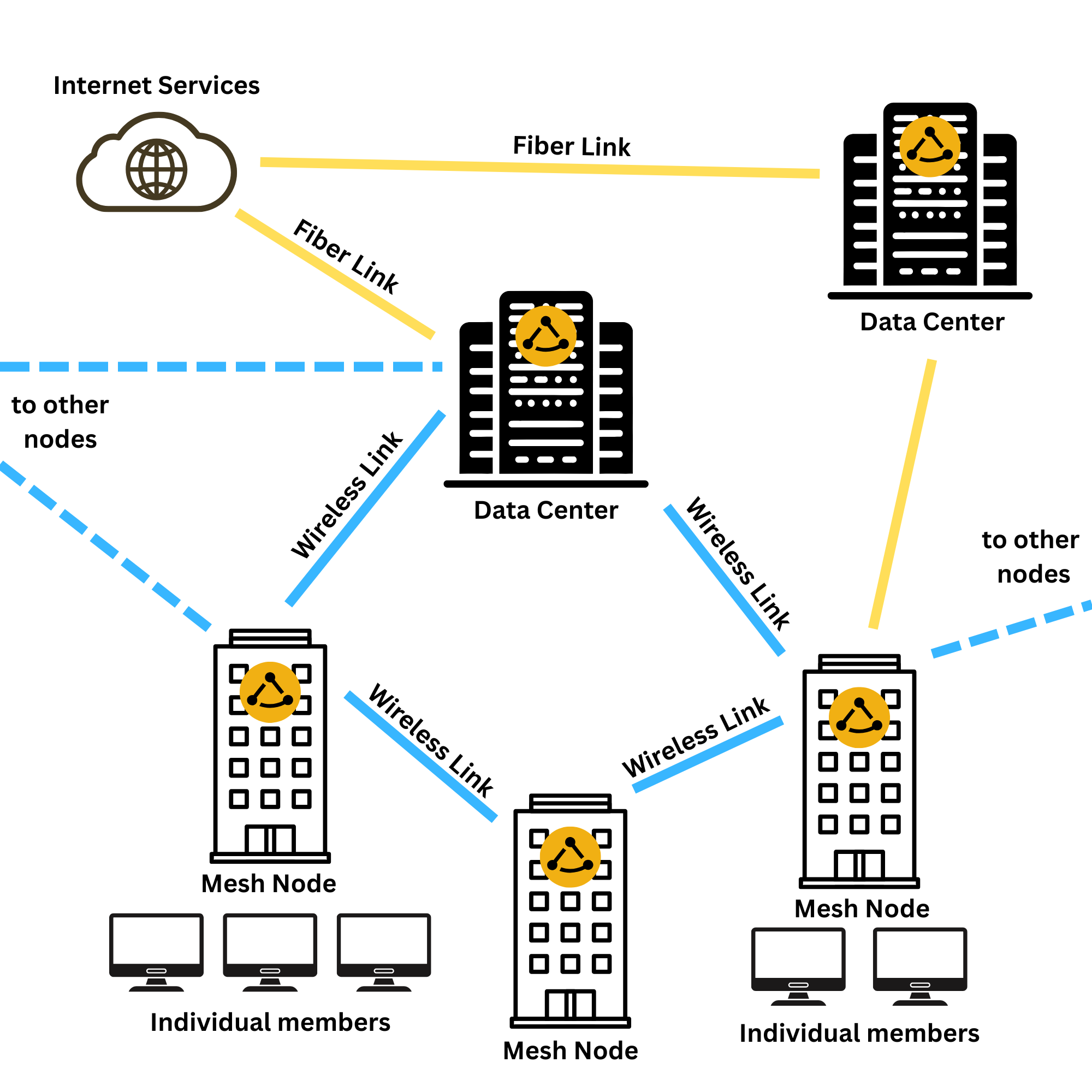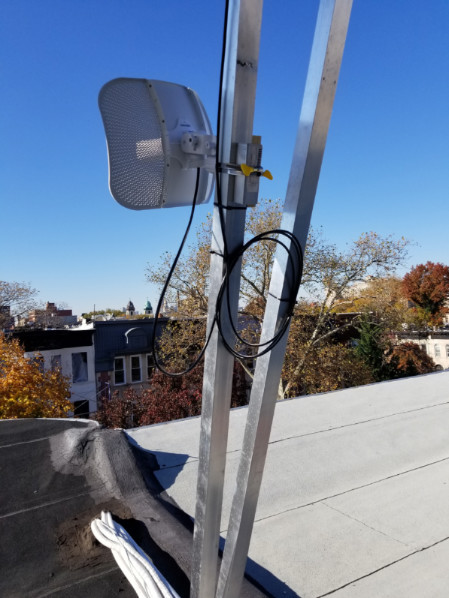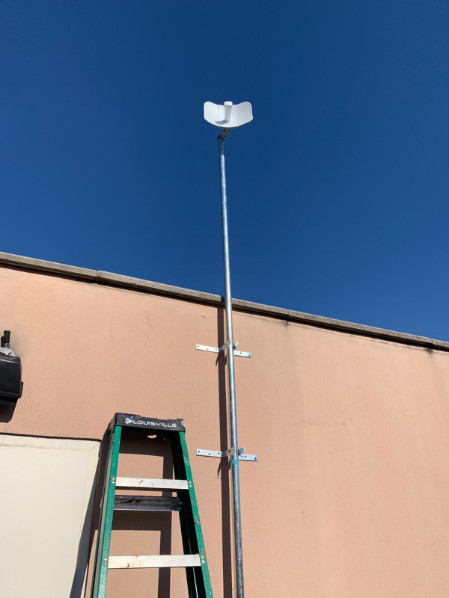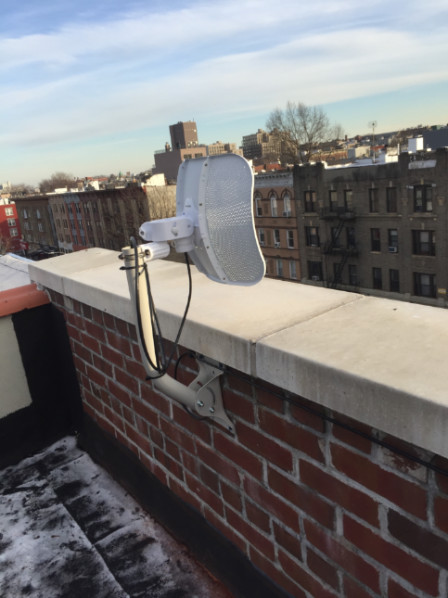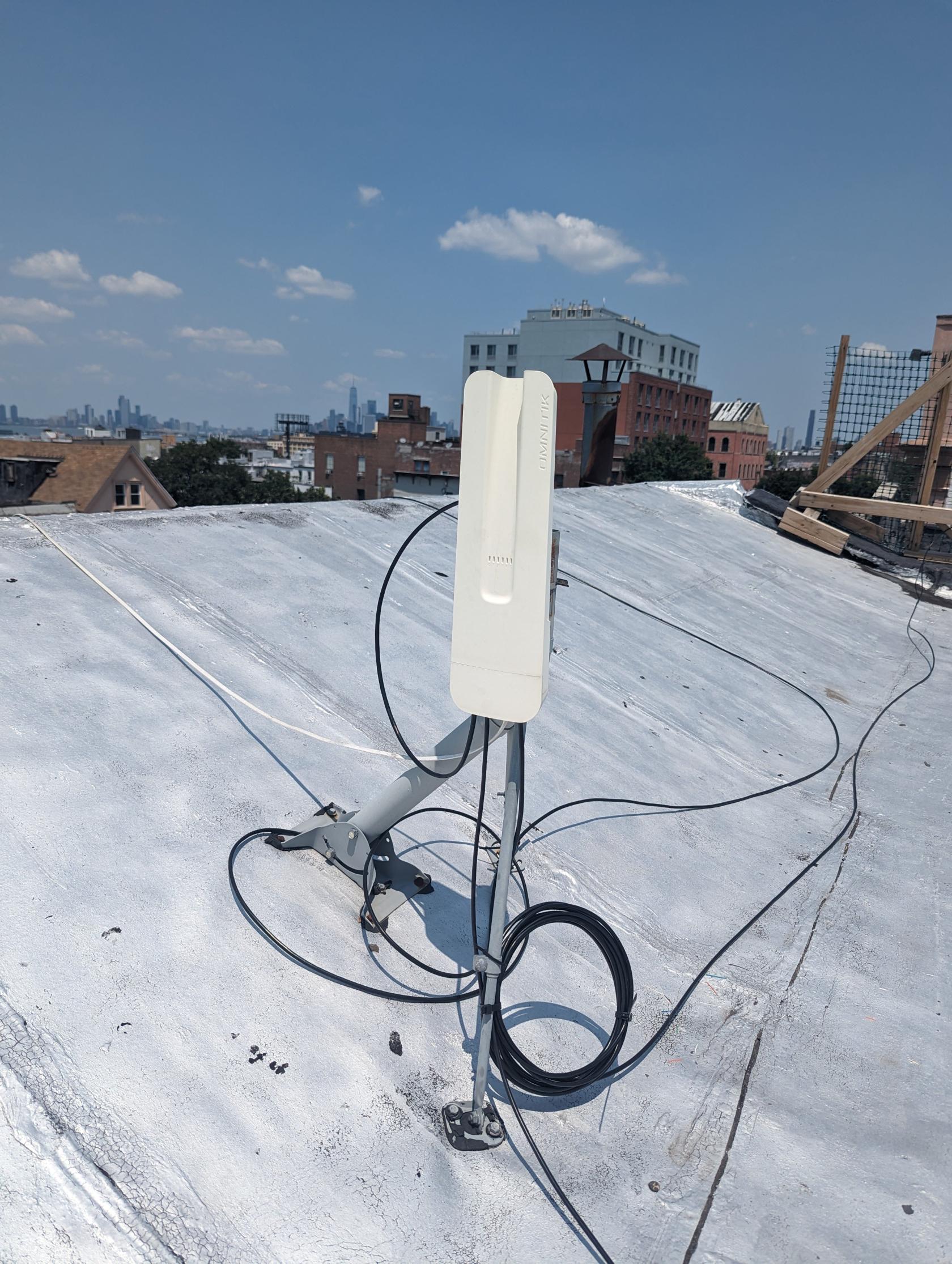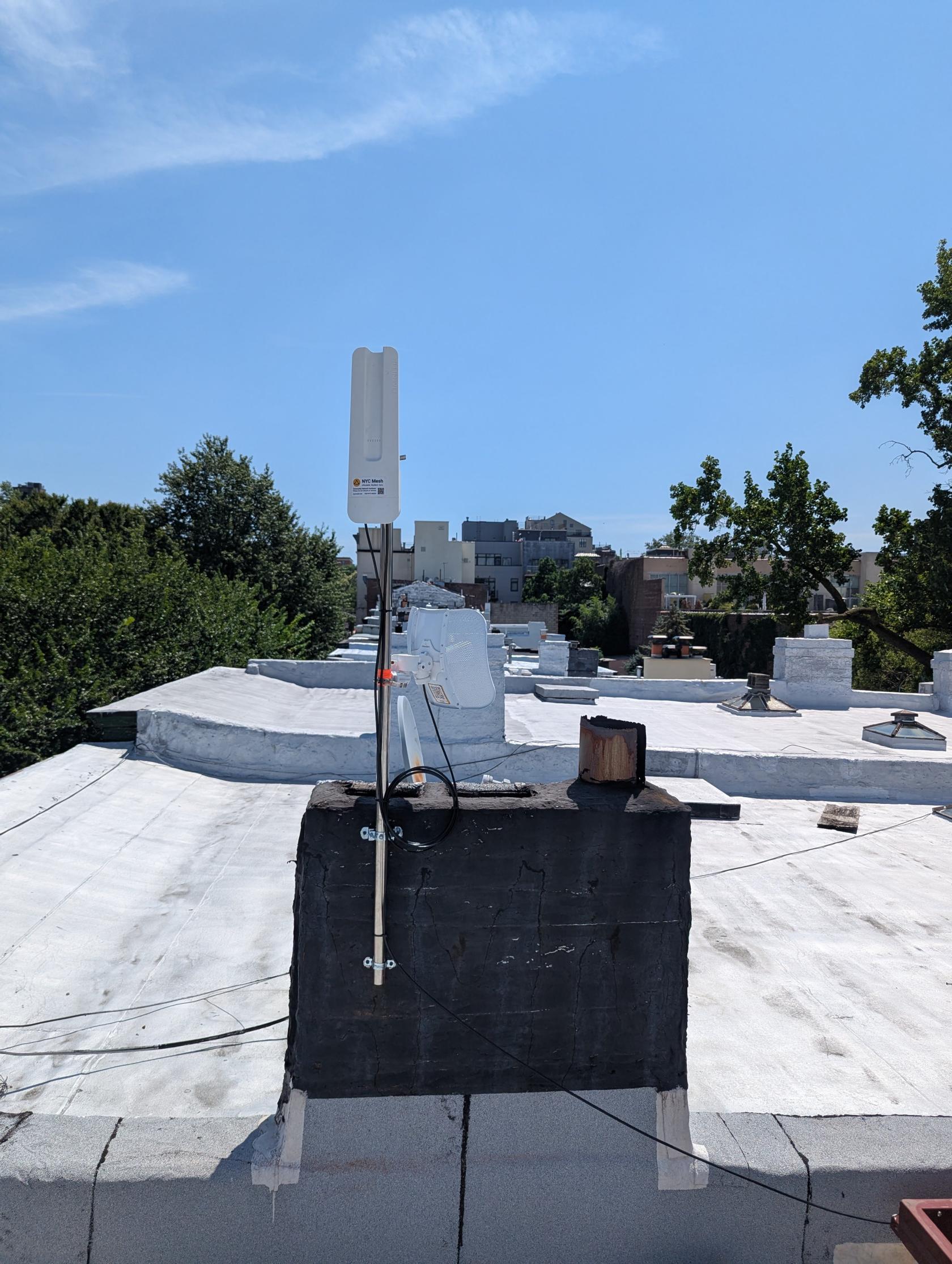Typical Installs
Please read our FAQ if you haven't already.
The intention of this page is not to be technical but rather give to the non-technical person an understanding of a typical installation.
NYC Mesh is an "over the air" network. The aim is to connect rooftop to rooftop using different types of equipment based on geography and topology. And in doing so, to expand NYC Mesh network coverage to the next block and so on*. The idea of NYC Mesh is to share the connectivity with neighbors, share resources, share equipment, share the network. Create a community of communities connecting to each other.
NYC Mesh typically uses two categories of equipment.
-
In the first category is equipment that "speaks" AirMAX (AirMax protocol).
Some hubs and supernodes have antennas covering a sector, or360°360°, that "speak" AirMax. To connect to those, you need to install on your roof an antenna that understands that same AirMax protocol (see Ubiquiti equipment).
In addition, some hubs may as well have antennas of the second category. -
The second category of equipment uses the same wifi as your home router, 802.11 (there are different versions of wifi- 802.11a/b/g/n/ac) (see Mikrotik equipment).
*Note: In some cases, such as large buildings we may use fiber to connect but would setup a rooftop "hub" to expand the network to surrounding neighbors.
Types of Installations:
Typical Mesh Rooftop Node:
A typical mesh installation on a rooftop has a LiteBeam antenna, which connects to a LiteAP sector antenna on a nearby hub.
An Omnitik router is placed on the roof, which provides short range wireless connections to nearby buildings and serves as the main router for that node. Cables are then run down the building to member's apartments, where a WiFi router provides a network to which they can connect their devices.
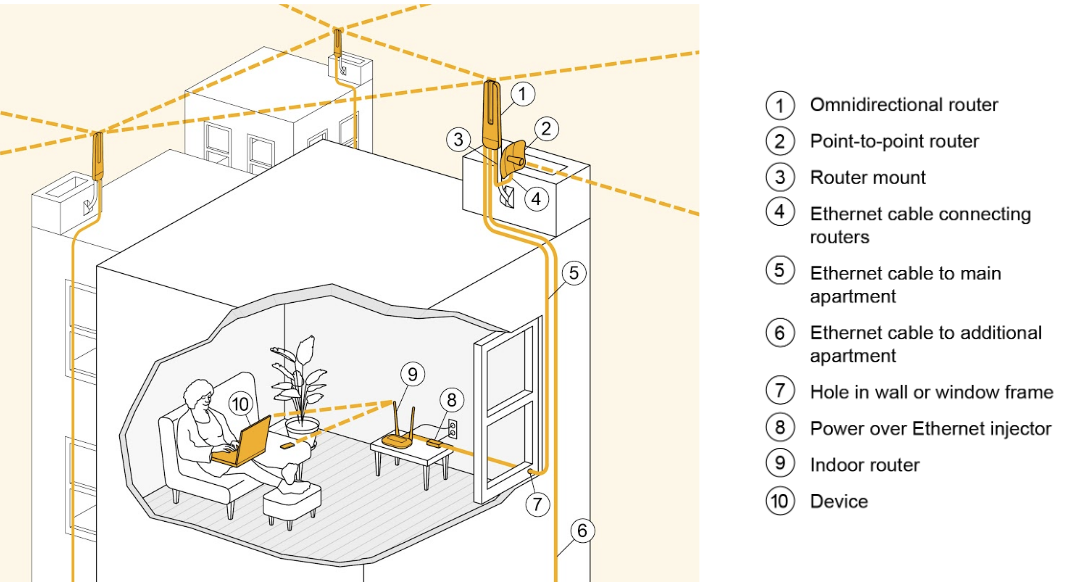
If another NYC Mesh node is nearby, sometimes only the Omnitik is required.
An Omnitk is mounted, which connects with another nearby node within 1-2 blocks. We call these nodes "Omni only" nodes, as they rely on their nearby neighbor nodes for their connection. Many Omni's in an area can form a cluster, sharing their connections with each other.
1.- Connect to a hub or supernode (one apartment - no roof-to-roof expansion). Such installation does not allow expansion ofAttaching the
Mesh network, nor allow sharing with neighbor community
A typical installation has a LiteBeam antenna on the roof. From that antenna an ethernet cable is run to the apartment. (note: the antenna is sometimes referred to as the outdoor router).
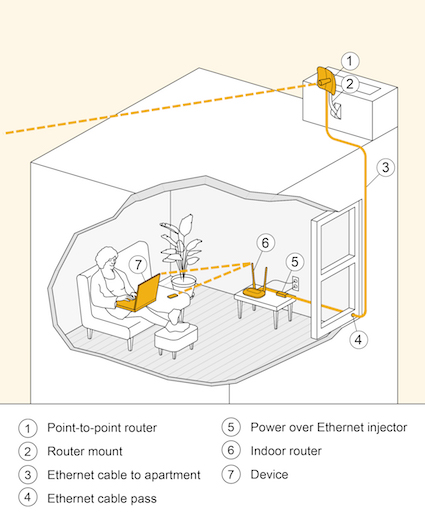
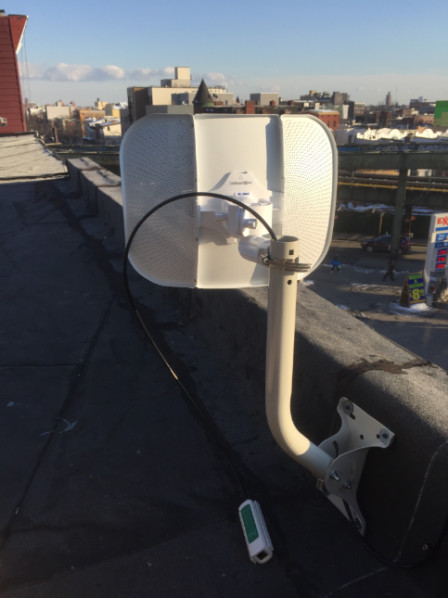
Depending on the roof itenvironment and what is available, mesh antennas can be mounted onto anthe oldroof in a number of ways.
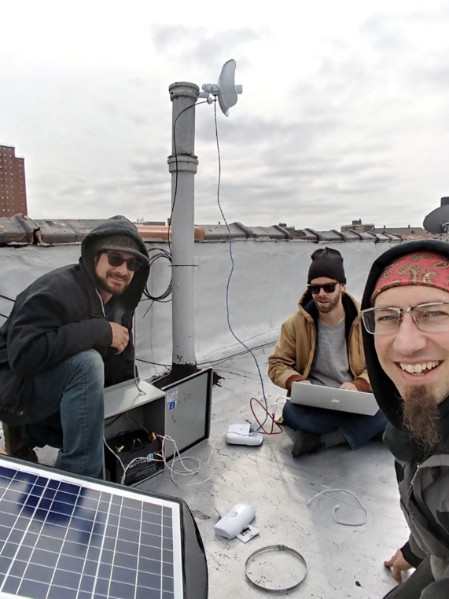
Many times, existing TV antenna pole,masts, satellite dish mounts or other existing brackets can be re-used, so we do not need to drill new holes to mount the antennas. All the antennas in the images below were mounted to previously abandoned existing mounts and brackets on an added pole, a wall, a chimney, or any existing infrastructure.rooftops.
In thesome apartmentcases, anywhen typethere's ofno WiFisuitable routerexisting mount that can be installed.reused, Wewe installmay need to drill holes and attach a TP-Linknew router.
This
always
2.- Connect to a hub or supernode (one or several apartments - with roof-to-roof expansion). Allow Mesh network expansion and sharingdone with the neighborpermission communityof the landlord or homeowner and steps are taken to seal any holes that are drilled to avoid leaks in the future.
Holes are drilled in chimneys, bulkheads or walls and never into the roof surface / waterproof membrane itself.
Mounting othersantennas totogether connector toseparately:
Often, rooftopantennas are mounted together, so the LiteBeam router we need to add an ethernet router and anOmnitik access point. For this we usually use an OmniTik mountedare on the same pole or it can be mounted somewhere else on the roof. The OmniTik will give you wifi on your roof and also allow 4 other apartments to connect with ethernet.pole.

The OmniTik is an Omnidirectional (360°) antenna. It has about 2-3 block radius. We connect the Litebeam to the OmniTik and apartments to the OmniTik via ethernet.
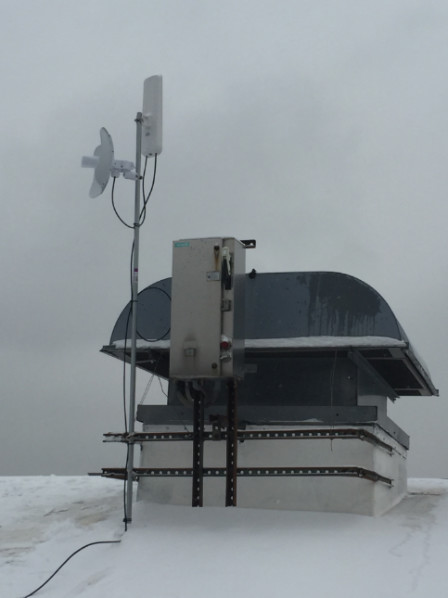
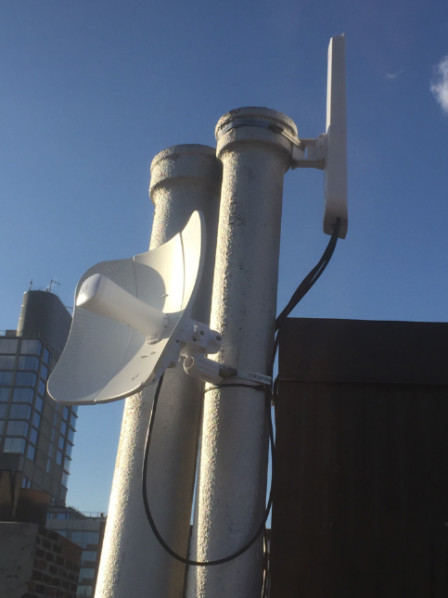

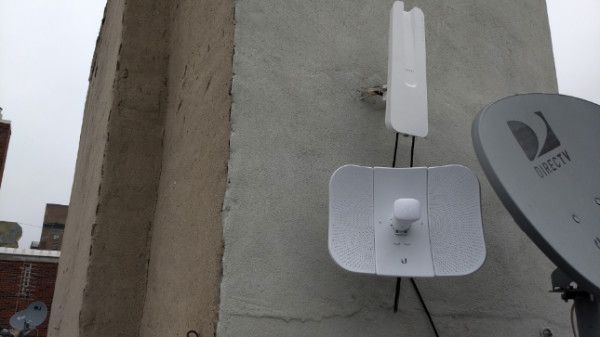
OmniTikSometimes, notit locatedmakes nextmore sense to place the Litebeamdifferent antennas in different areas of the roof.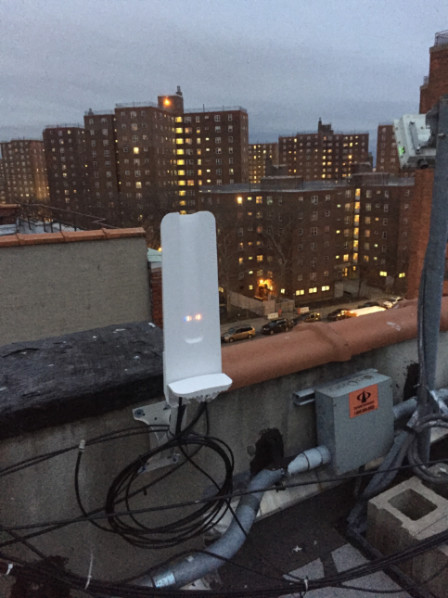
Other rooftops can connect to the OmniTik by using another Omnitik if they are close enough or we use, in some cases, an SXT.
This setup as a major benefit. It allows the devices to mesh with each other. If an other Omnitik is installed in a 2-3 blocks radius they will connect to each other and create a mesh, thus improving reliability and allowing a) the Mesh network to expand, and b) the neighbor community to use it to access internet.
Larger
building / hub installs3.- A good rooftop can be "beefed up" to allow for more connectivity.
If the rooftop is interesting (at a good location, it's high enough, etc) we may install "sectors" or other type of equipement. Sectors are antennas that communicate via Ubiquiti's AirMax protocol and have a longer range than an OmniTik. Additionally, we may connect to two hubs, etc....
Here are four examples.
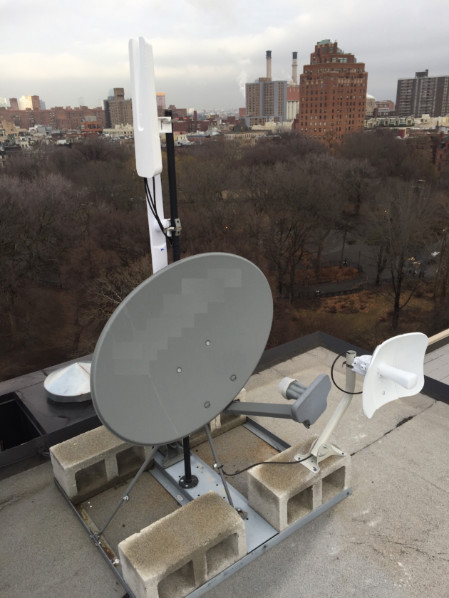
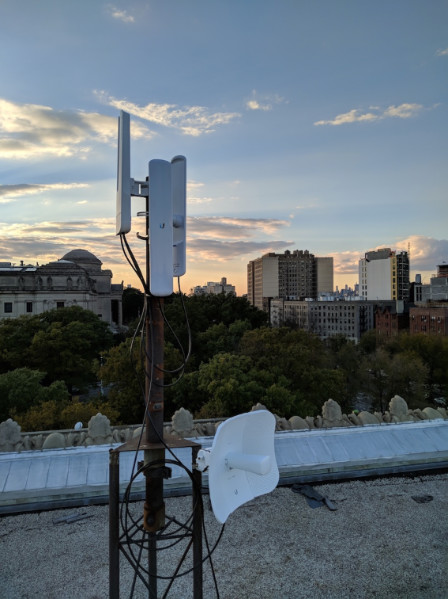
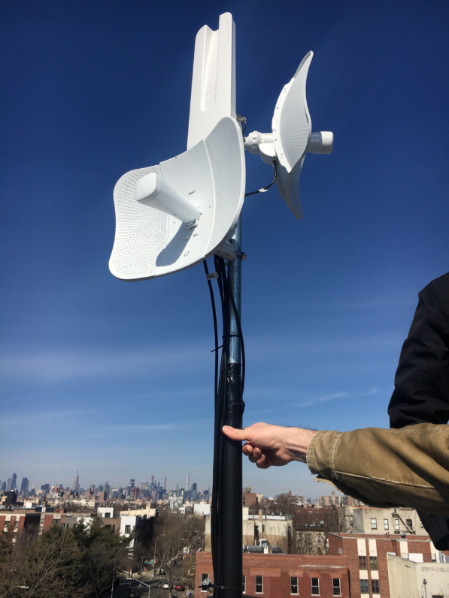
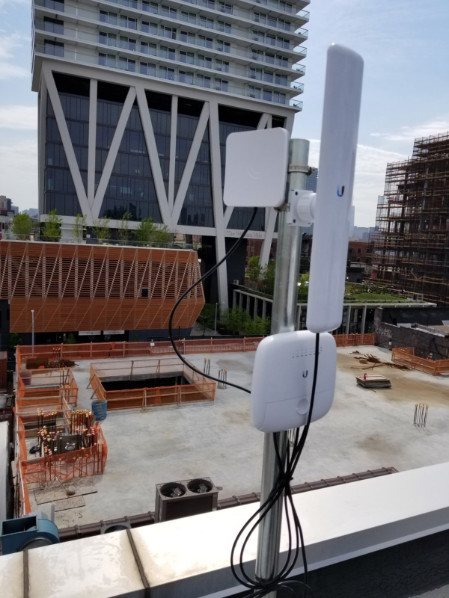
4.- A building can connect to another building with an OmniTik using a different antenna
A building can connect to another building with an OmniTik using a SXT antenna. It can then serve one or several apartments.
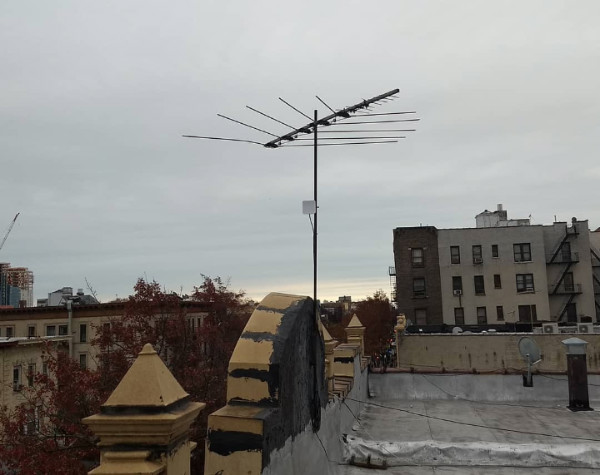
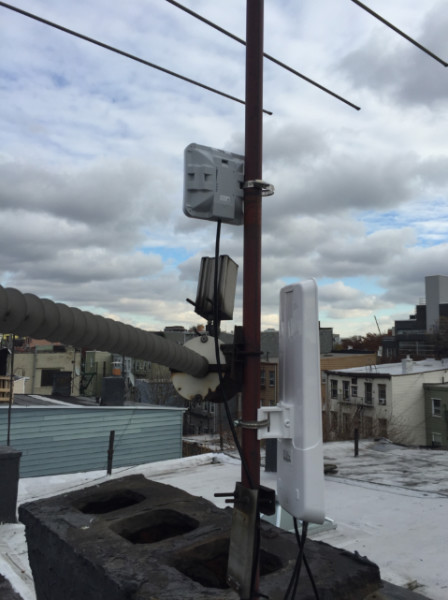
Those are typical installations. Other setups are possible and in use throughout NYC Mesh.
For the most up-to-date overview of the entire install process, check out the Install Training Presentation.

